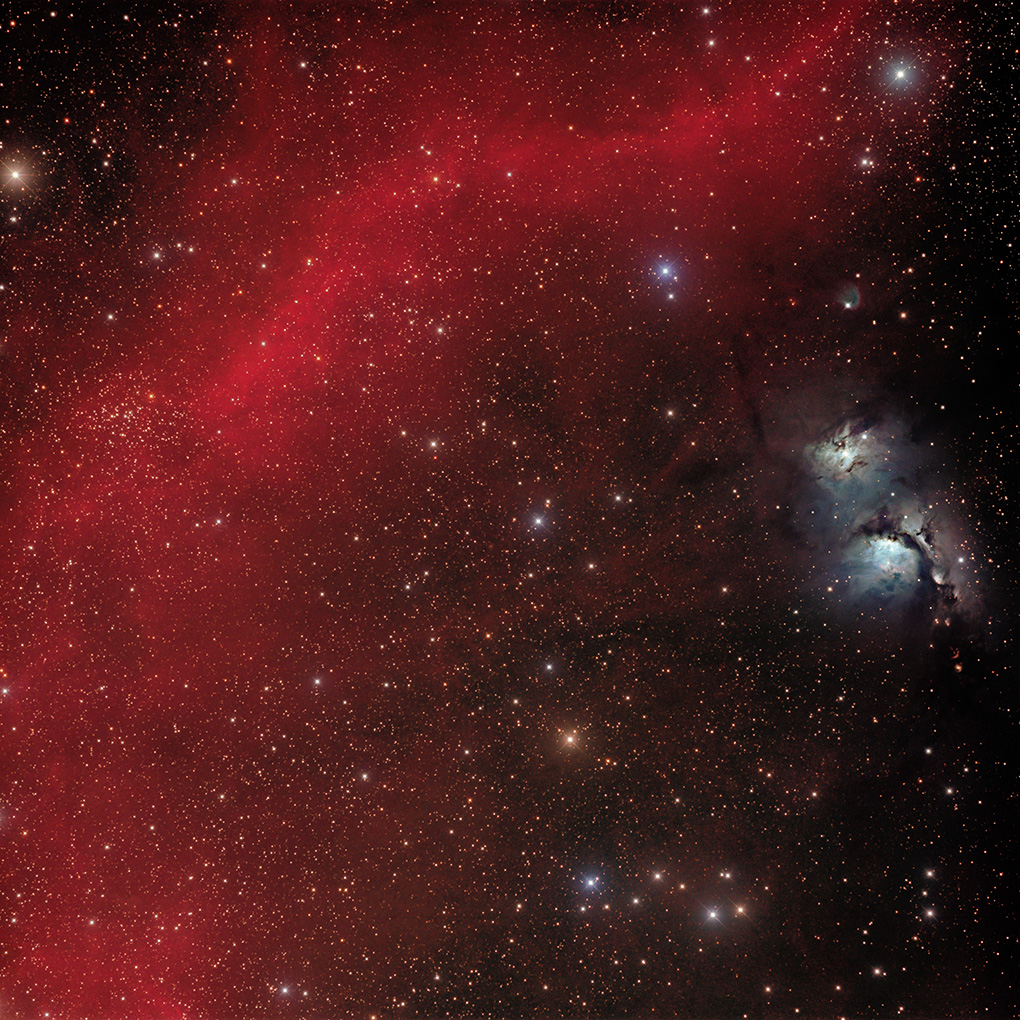In the evening, Orion’s Belt, a row of three brilliant stars, can be seen rising in the southeast, at least for us mid-latitude northern hemisphere dwellers. It’s an iconic sight, written about by civilizations as ancient civilization itself. What those civilizations couldn’t know, is that there’s much more to Orion than meets the eye. This image includes two perfect examples, situated just north of the eastern star of the belt: Alnitak.

M78 consists of two regions of brightly glowing “reflection nebulae,” seen here at right-center. These objects are very dusty, and the brilliant light from the newborn stars embedded within the clouds of dust illuminate their surroundings with their blue light. Just like dust on your dresser, though, it is thinner and thicker in places. Where it is thicker, even the light of these brilliant stars cannot penetrate, and we see those areas in silhouette against the brightly glowing background.
M78 is crowded with young stars, most of them too dim for their light to get through even the thinner dusty regions. The light from the brighter stars will resolve that problem. Since light actually exerts pressure on atoms, molecules, and tiny grains of dust, the light from the bright stars is in fact literally blowing the dusty shroud away. Soon, relatively speaking, there will be “naked” star clusters in the place of M78. An unrelated example of one of these can be seen near the left edge of the image.
The lovely red arc that dominates the left side of the image is thought to be a supernova remnant, the almost-spent shock wave from the explosion of an ancient massive star. It is very large, basically wrapping the entire east side of Orion. E. E. Barnard, the famous mapper of the Milky Way, discovered this glowing loop, and this it’s named after him. Perhaps it’s no coincidence that there are so many starbirth regions in Orion. There is a lot of hydrogen and dust in this part of the sky. The compression of this passing shock wave may have been enough to trigger regions of gravitational collapse in this massive cloud, the first step to forming a new star.